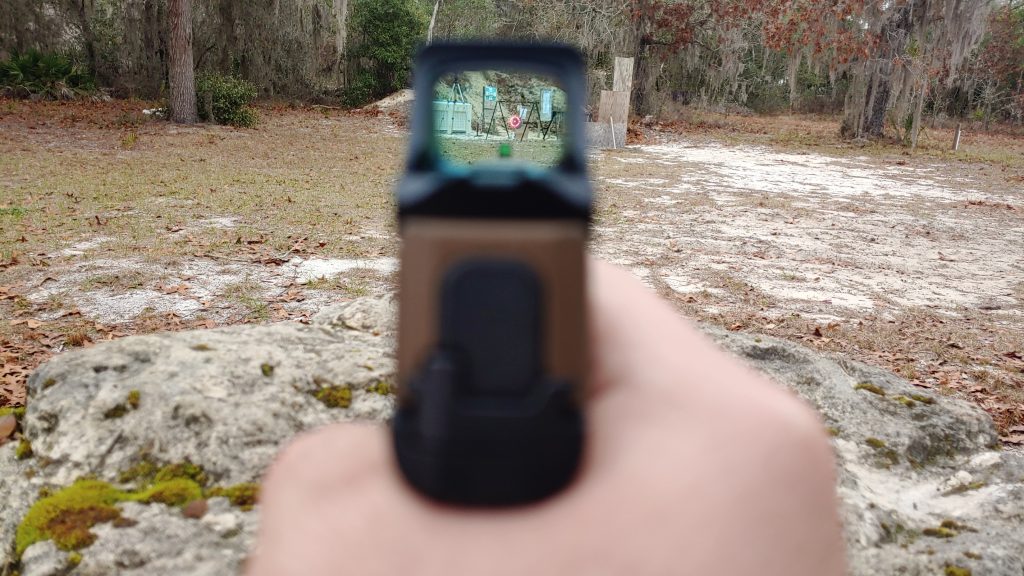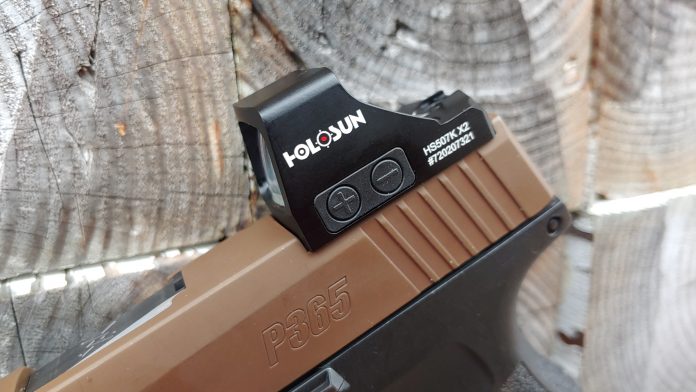Have you ever looked through a red dot and seen that blue tint and wondered why it’s there? Why don’t all optics have this blue tint? Why are there so many variations of this blue tint? Sometimes it is so dark it’s almost purple, and other times it can only be seen in certain light scenarios. Well, that blue tint is something we call a notch filter. According to Edmunds optics notch, filters are optical Filters that selectively reject a portion of the spectrum while transmitting all other wavelengths.
What Does a Notch Filter Do?
The purpose of a notch filter is to allow your red dot to show up on the lens. Do you ever wonder why the laser from the emitter doesn’t just go through the glass and onto your target like any other visible laser sight? Well, a notch filter stops that from happening. It ensures your dot shows up on the lens and doesn’t just pass through.

Advertisement — Continue Reading Below
At the same time, it lets every other bit of light pass through. This keeps your lens from reflecting a ton of extra light you don’t need. This is based on the spectrum, and with red dots, the spectrum is obviously red. It can vary as we get optics with green and gold reticles as well.
These filters do more than reflect the dot. They allow it to shine brightly. A good notch filter can ensure your dot is easy to see without it sucking through batteries. It’s not out of pocket to say a good notch filter will preserve your battery life while giving you a nice bright dot.
Why Some Are More Visible
This is a more complicated question. There isn’t just one factor to consider. Some might be more visible to make up for a lower-quality emitter. Others can be hardly seen because of the emitter’s quality. Glass quality also have a huge effect, as does the type of notch filter. As you know, not all optics are made equal. Higher-end optics like Steiner MPS appear to have zero notch filters, but when you look at something like the Holosun 507C, it’s quite visible.
Advertisement — Continue Reading Below

Ultimately its visibility isn’t really a bad thing. With a red dot, you are using a two-eyed open shooting style with a target focus. The blue tint shouldn’t be a concern. If these were long-range optics, then the concerns would be valid. A blue tint is certainly not a bad thing on red dots.
Now you know what that blue tint is, and hopefully, you can move into the world with a little more knowledge. Remember, knowledge is half the battle…the other half is violence.
Advertisement — Continue Reading Below















